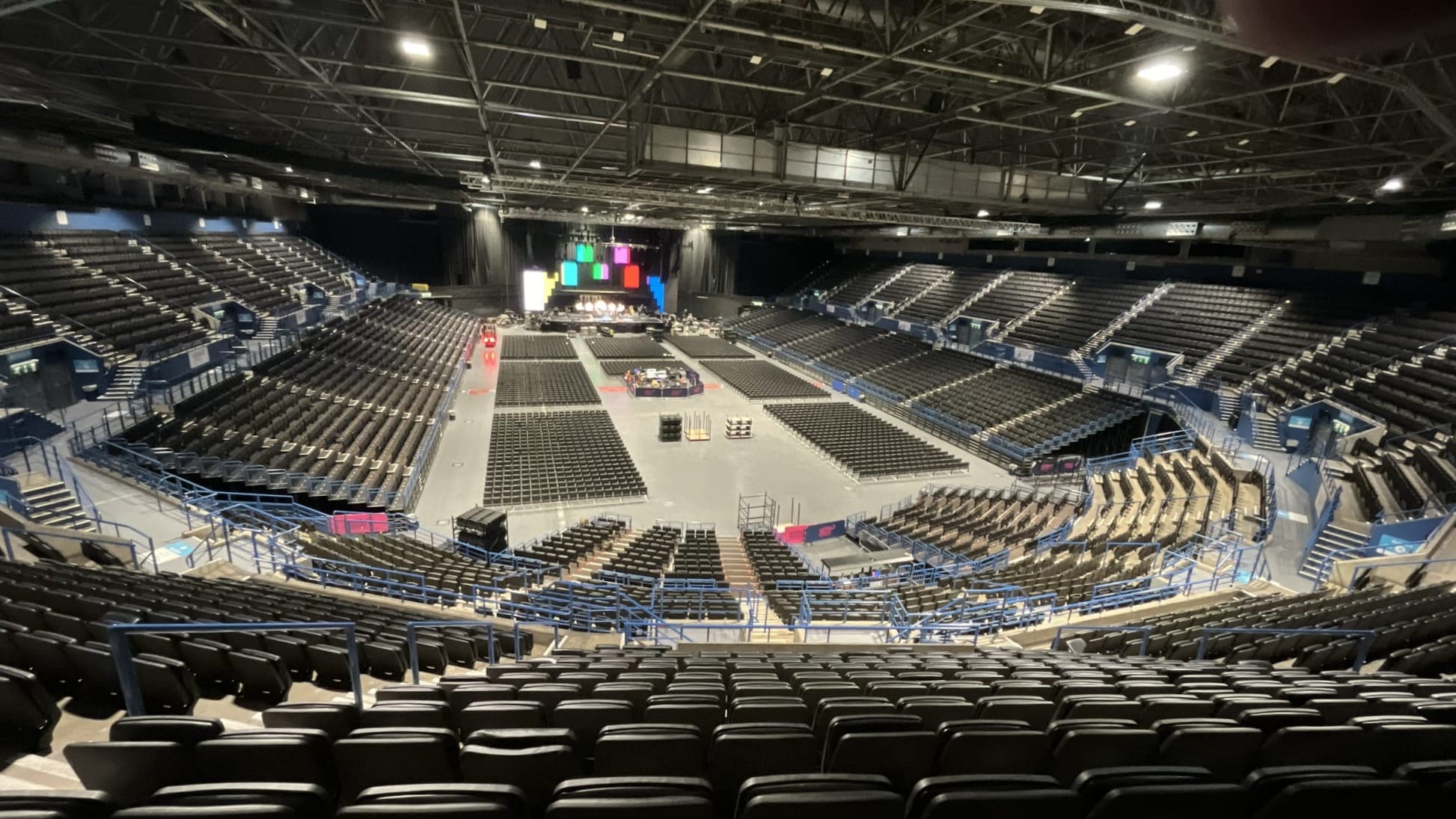Birmingham Arena

Birmingham Arena feels even bigger than the O2. The 02 holds more people (not the biggest so far on the tour—at 21 000 capacity the Manchester Arena tops it by a thousand). Birmingham Arena holds a mere 15 800 but it is expansive. The acoustics are remarkably good for such a vast space, without the slap-back echoes that can be problematic in large indoor venues. I suppose there is a point at which these buildings get so big that they start to behave more like outdoor spaces. (I'm sure I have read somewhere that there are covered sports stadiums in the US that are so big that clouds form inside them.)
How a room sounds is the one big variable that a sound engineer has to deal with. Factor in that the arrival of 15 000 people will drastically alter the acoustics of a space (usually for the better—semi-rigid sacs of fluids are very good acoustic absorbent) and you begin to appreciate that the know-how and experience to deal with how different rooms sound is key to being an effective front of house engineer. (Particular stages can also have their own idiosyncrasies that a monitor engineer has to deal with, over and above the people on them—insert monitor engineer/toilet seat joke here—but that is another, potentially even less interesting subject.)
Glasgow has at least two world famous rock and roll rooms in the Barrowland Ballroom and King Tut's Wah Wah Hut. They endure not just because they sound great—the are both run by exceptionally sympathetic, experienced (and tolerant) teams—but if they didn't sound great they wouldn't have endured. Good sounding rooms become famous venues for the simple reason that you have a better time when you go there to watch a band, and you have a better time when you go there to play. There was an extra wee vibe in the room in Birmingham, a little bit of extra connection between the stage and the audience—it's a marginal thing that you learn to tune into, how to use it to calm yourself and to lean into as you play. Another good, good night.